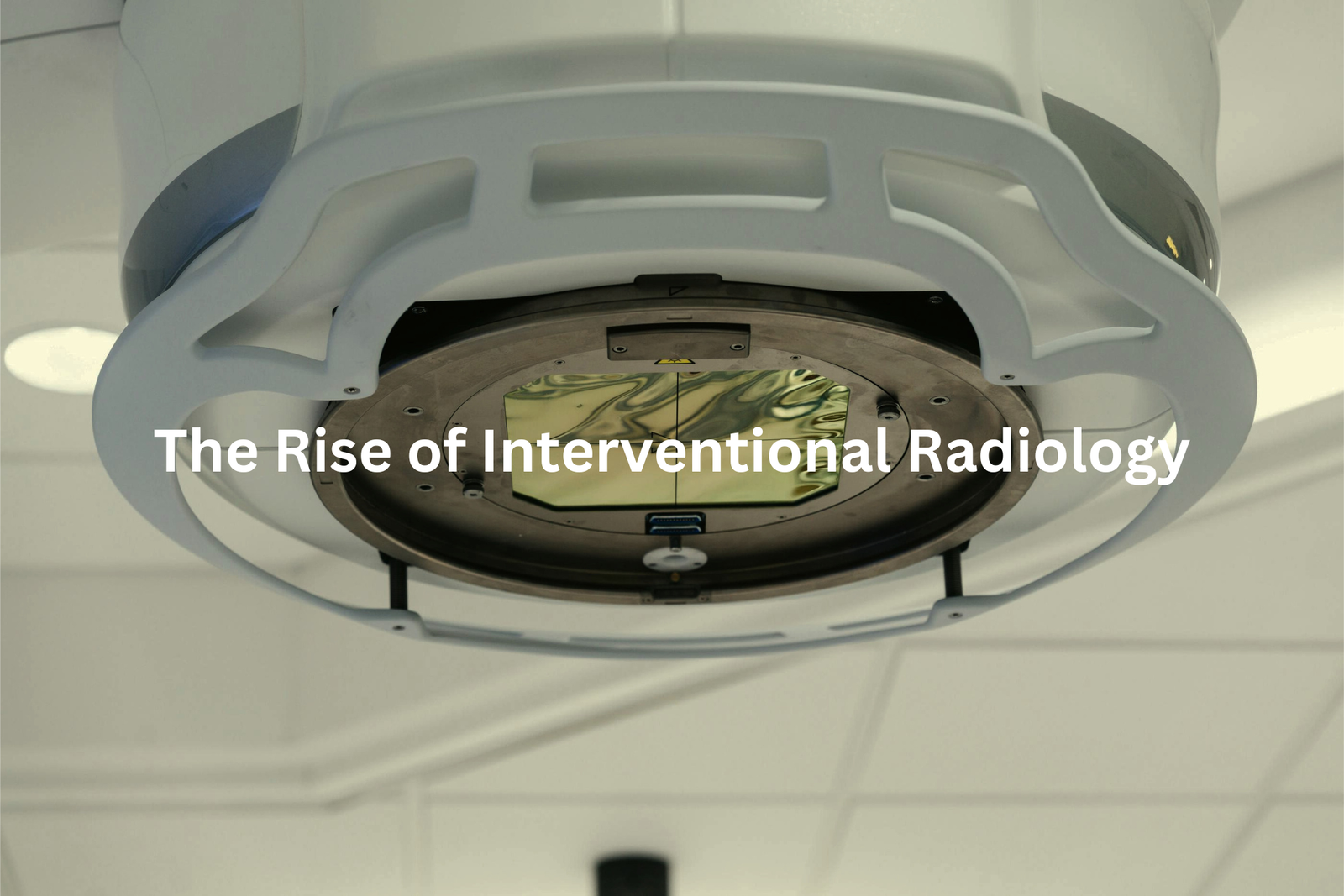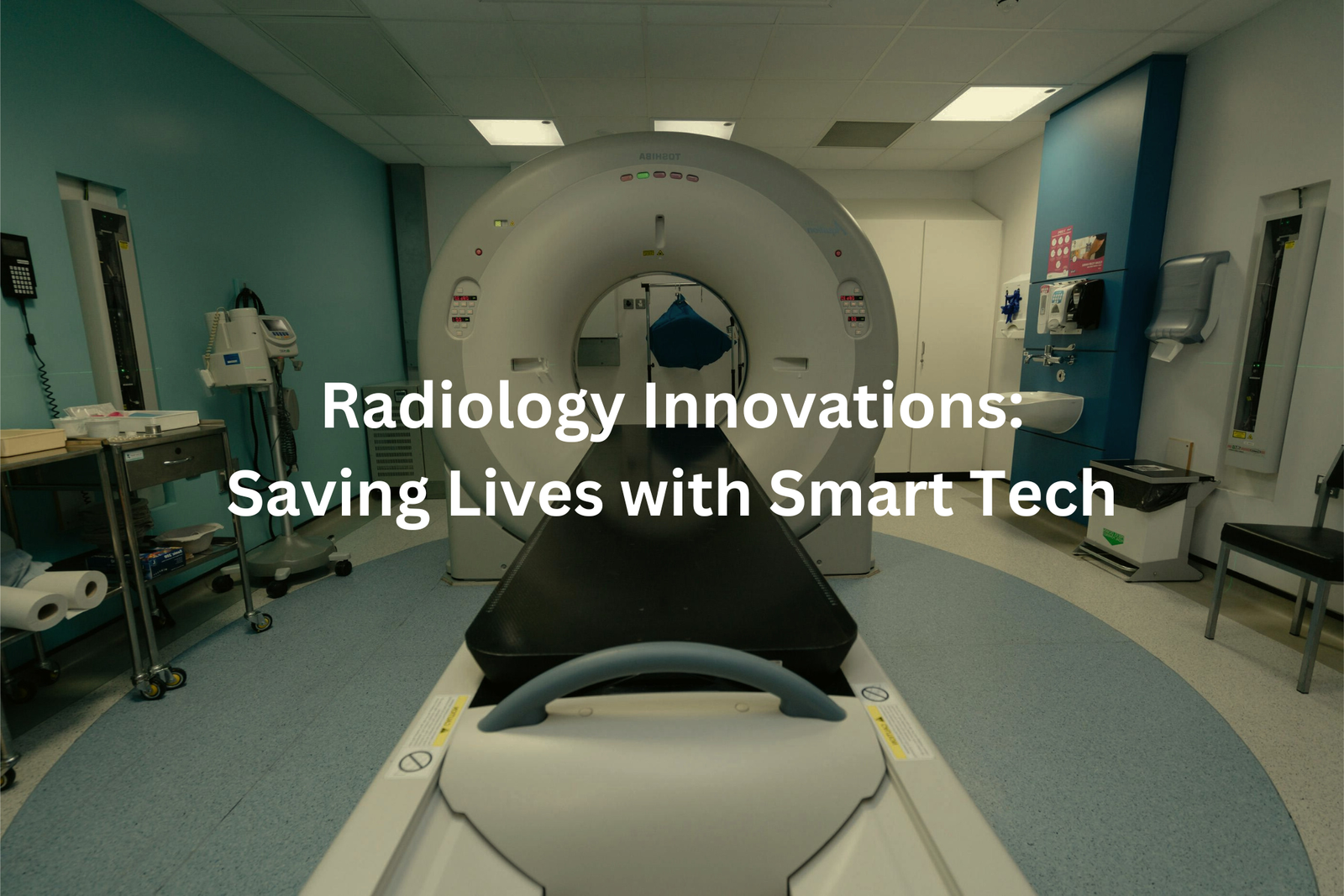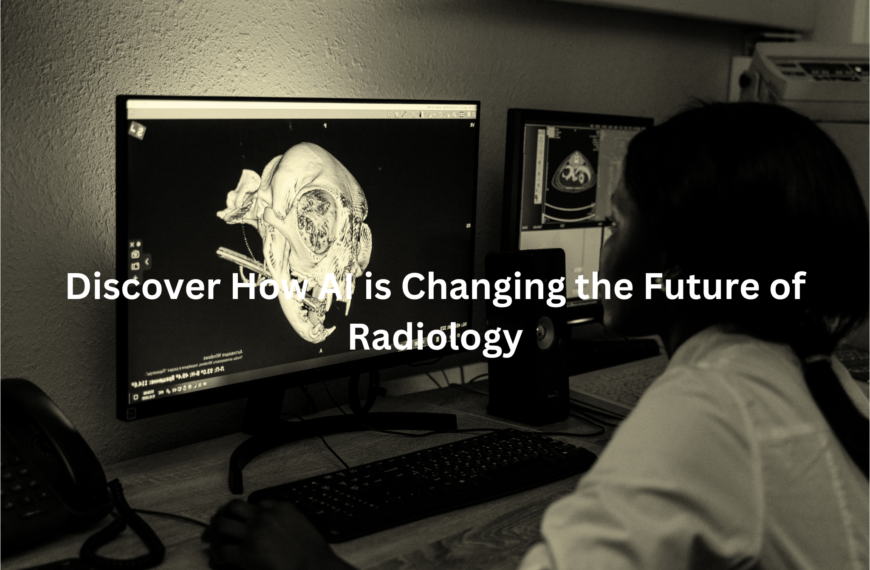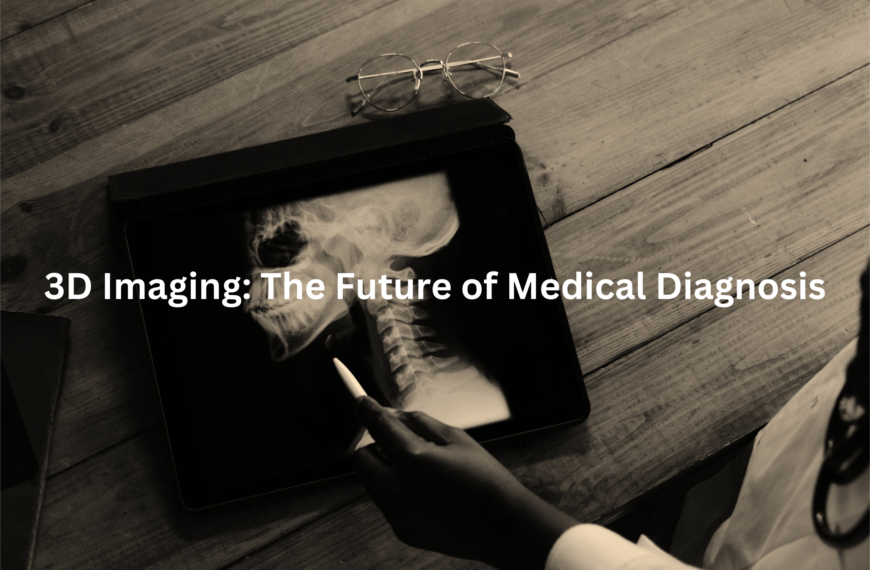Radiology innovations are helping doctors detect issues earlier with advanced tech and AI. Learn how these tools improve patient care and save lives!
Radiology innovations are really changing how doctors look inside our bodies. New technologies, like 3D mammograms and smart AI tools, help doctors spot problems like breast cancer much earlier than before. These advancements mean patients can get the right care much faster, which is super important for recovery.
For example, a 3D mammogram can show more detail than regular ones, improving detection rates. This is great for women’s health! If you’re curious about how these exciting innovations are helping doctors find issues sooner and improve lives, keep reading to discover even more about the future of radiology!
Key Takeaway
- Radiology innovations use AI to help find diseases early.
- 3D imaging shows a clearer picture of our insides.
- New tools make sure patients are safe during scans.
What is Radiology?
Radiology is like a special window into the body, letting doctors see what’s hidden under the skin(1). It’s amazing how these tools can show problems without needing surgery. Think of it as a camera that looks through bones, organs, and tissues—science making the invisible visible.
There are different tools in radiology, each with its own job. X-rays are the most common. They’re quick and great for spotting broken bones but miss smaller details. CT scans (computed tomography) are like super-detailed X-rays, showing cross-sections of the body. They’re often used for finding tumours or checking organs.
MRI (Magnetic Resonance Imaging) is a bit different. It uses magnets and radio waves, not radiation, to make clear images of soft tissues like the brain or muscles. A friend once had an MRI for a knee injury—it showed every tiny tear. Radiology keeps improving, helping doctors act faster and treat patients better.
How AI is Changing Radiology
AI, or artificial intelligence, is like giving computers a kind of clever brain. It’s not human thinking, but it’s smart enough to help doctors make better choices. For example, AI can look at medical images and find tiny details, like early signs of breast cancer, that might be missed.
Doctors often have to review hundreds of scans, which can be exhausting and time-consuming. AI tools act like a second set of eyes, spotting areas of concern quickly and accurately(2). This can lead to earlier diagnoses, which often means better treatment results.
In breast cancer detection, studies show AI can find things humans might overlook. It also helps hospitals manage large numbers of scans by sorting them and flagging urgent cases. While AI won’t replace doctors, it’s proving to be a valuable assistant. For patients, this means faster care and, hopefully, better health outcomes.
The Coolness of 3D Imaging

Doctors often describe 3D imaging as putting on magic glasses. Instead of flat, dull pictures, they see a patient’s insides in 3D, almost like stepping into a video game. But this isn’t just cool tech—it’s practical.
Think of it like solving a tricky puzzle. Seeing every piece clearly from all angles makes it easier. That’s what 3D imaging does for doctors. It shows organs, bones, and tissues in detail.
Here’s what it can do:
- Help surgeons plan better. They can see the exact size and shape of a tumour before surgery.
- Spot problems earlier. Tiny fractures or blood clots are easier to find.
- Create perfect prosthetics or implants. Scans ensure a proper fit.
I once saw a doctor use a 3D scan to explain spinal surgery. It showed every curve of the spine. Amazing, but a bit eerie. For patients, it means fewer surprises. Ask your doctor if it’s right for you.
Tele-Radiology: Help from Afar
Sources: TeleradiologyHUB.
Some places feel so far out, it’s like the middle of nowhere. The nearest hospital might be hours away, and seeing a specialist? That can feel impossible. But tele-radiology changes things.
With tele-radiology, doctors can check medical images—X-rays, CT scans, MRIs—without being nearby. It’s like sending an email instead of a letter, only it could save a life.
Here’s why it works:
- Cuts travel: No need to drive for hours just for a second opinion.
- Connects experts: A radiologist in Brisbane can help someone in the Outback.
- Faster care: Images are sent instantly, so doctors act quicker.
I once met a family whose son had a bad fall. Their rural clinic sent his X-rays to a radiologist in Sydney. Within an hour, they had a plan. No long trips, no delays. It’s not perfect—poor internet can slow things down—but it’s worth asking about if you’re far from care.e than that.
Putting Patients First
The hum of a radiology machine can feel cold, but the right care makes it human. It’s not just about the scans; it’s about the people. Patients don’t want to feel like numbers—they want to feel understood.
Radiology is changing to focus more on patients, and it’s making a difference. Instead of rushing through tests, it’s about slowing down and connecting.
Here’s how radiology is becoming more patient-friendly(3):
- Clear explanations: Telling patients what to expect, like how an MRI is noisy but safe, helps them feel calmer.
- Involvement: Showing patients their results (even if they don’t get all the details) makes them feel part of their care.
- Comfort: Things like softer exam tables or peaceful room colours make a big impact.
A friend once told me how a kind radiology tech eased her CT scan fears by explaining, “The warm flush is just the dye.” She felt cared for, not scared. Always ask questions—it’s your health.
The Rise of Interventional Radiology

In the dim light of a hospital imaging room, something remarkable happens. Interventional radiology steps in, letting doctors treat problems inside the body without big surgeries. It’s all about precision, using imaging like X-rays or ultrasounds to guide tiny tools exactly where they’re needed.
These procedures can do a lot:
- Take tissue samples (biopsies) with minimal discomfort.
- Treat tumours by heating or freezing them.
- Clear blocked blood vessels to restore blood flow.
A neighbour once shared her biopsy story. “I was home the same day,” she said, amazed at how simple it felt. That stuck with me—how such small tools, sometimes just 2 millimetres wide, could make such a difference.
The benefits? Less pain, fewer risks, and faster recovery. If you ever need a procedure, ask about interventional radiology. It’s not always the answer, but when it is, it’s like skipping the hard part of the journey.
Safety First: Protecting Patients
Hospitals can be noisy—machines buzzing, monitors beeping, people talking all at once. But in the imaging rooms, it’s different. Quiet. Focused. Machines like CT scanners and X-rays work with careful precision, not guesswork.
Radiation safety is smarter now. Machines adjust doses based on:
- Size: Kids get less radiation than adults.
- Area: A hand scan uses less than a chest scan.
- Image type: Enough detail to diagnose, no extra exposure.
It’s like turning the TV volume to just the right level—not too loud, not too soft. I remember my uncle’s doctor explaining after his chest scan, “We use only what’s needed. No more, no less.” It made him feel better, less worried.
Modern systems can cut radiation by 50% compared to older ones, while keeping images clear. If you’re unsure, ask questions. Knowing the machine and process helps. Trust and tech work best together.together.
Working Together for Better Care
Doctors don’t work alone, even if it seems that way in busy hospitals. Radiologists, for example, are leaving their reading rooms more often now, teaming up with GPs, surgeons, and other specialists. They’re not just doing tests—they’re making sure the right ones are done.
Here’s what that looks like:
- GP chats: Before ordering a scan, GPs and radiologists discuss if it’s really needed.
- Specialist advice: Surgeons or oncologists help decide which imaging is most useful.
- Clear reports: Results are written so everyone—patients included—knows what’s next.
I remember my sister’s sprained ankle. Her GP called radiology first. They decided to wait a week. No scan, no cost, no radiation. It healed fine.
Studies show 20% of scans could be avoided with better communication. Patients can ask, “Do I need this test?” Sometimes, waiting or another option is better. It’s teamwork, and it helps everyone.
FAQ
What are some real-time imaging AI innovations in radiology?
Real-time imaging AI can help radiologists make faster and more accurate diagnoses by quickly analysing medical images. This technology uses advanced algorithms to identify patterns and anomalies that may be difficult for the human eye to detect. Real-time AI-powered imaging can enhance patient care by enabling quicker decision-making and earlier disease detection.
How can third-party and cloud-based imaging data solutions improve radiology workflows?
Third-party and cloud-based imaging data platforms allow healthcare providers to easily store, access and share imaging data across their organisation. These solutions can streamline radiology workflows by facilitating better data management, collaboration and decision-making. They also offer benefits like high-quality storage, improved security and enhanced patient experience.
What is the impact of AI in improving patient outcomes in radiology?
AI innovations in radiology, such as machine learning algorithms, can help enhance patient outcomes in several ways. AI-powered image analysis can lead to more accurate diagnoses, enable early detection of diseases, and support better treatment planning. This technology can also optimise radiology workflows, improve diagnostic efficiency and reduce the risk of human errors, ultimately leading to better patient care and outcomes.
How can radiology leverage advanced imaging techniques and technologies?
Radiology departments can leverage a range of advanced imaging technologies, including MRI, nuclear medicine, molecular imaging and higher-resolution modalities. These cutting-edge techniques can provide more detailed and accurate information, leading to earlier disease detection, more precise diagnoses and better-informed treatment decisions. Integrating these innovative imaging solutions into radiology workflows can enhance patient experience and lead to improved healthcare outcomes.
What are the key benefits of enterprise imaging and cloud-based radiology solutions?
Enterprise imaging platforms and cloud-based radiology solutions offer numerous benefits, such as improved data management, enhanced collaboration among healthcare providers, and better patient experiences. These technologies enable seamless access to medical imaging data, facilitate secure sharing of information, and support more efficient radiology workflows. By leveraging these innovative solutions, radiology departments can enhance diagnostic accuracy, optimise resource utilisation, and ultimately deliver better patient care.
Conclusion
Radiology innovations are really changing how doctors keep us healthy. With AI and new imaging technology, spotting diseases early is getting easier, which helps improve patient care. As these tools develop, we’ll see even more amazing changes in medicine. Radiology isn’t just about images; it’s about helping people live healthier lives. So, the next time you hear about radiology, think of all the incredible things happening that make a difference in health care!
References
- https://www.insideradiology.com.au/
- https://www.ranzcr.com/whats-on/news-media/a-new-breed-of-ai-is-changing-healthcare-but-it-comes-with-a-warning
- https://www.ama.com.au/sites/default/files/2022-03/Putting_Patients_First_A_Better_Health_System_for_Tasmania_Action_Plan_%25284%2529_EXTENDED.pdf




